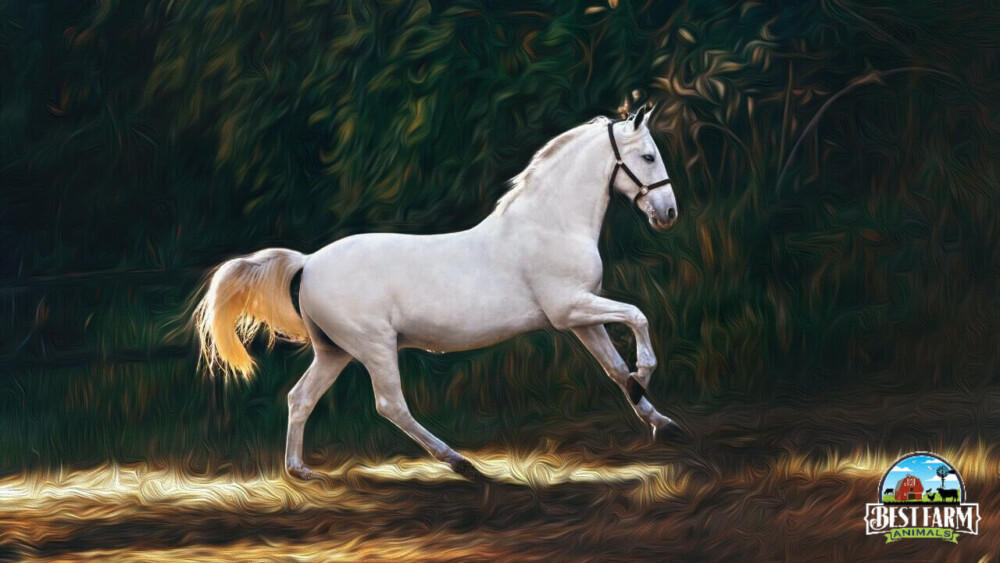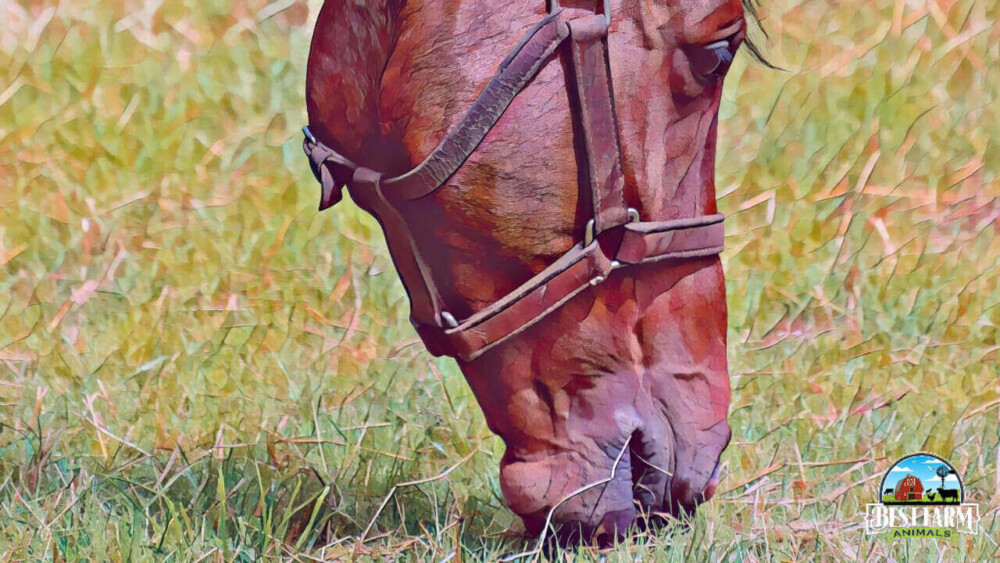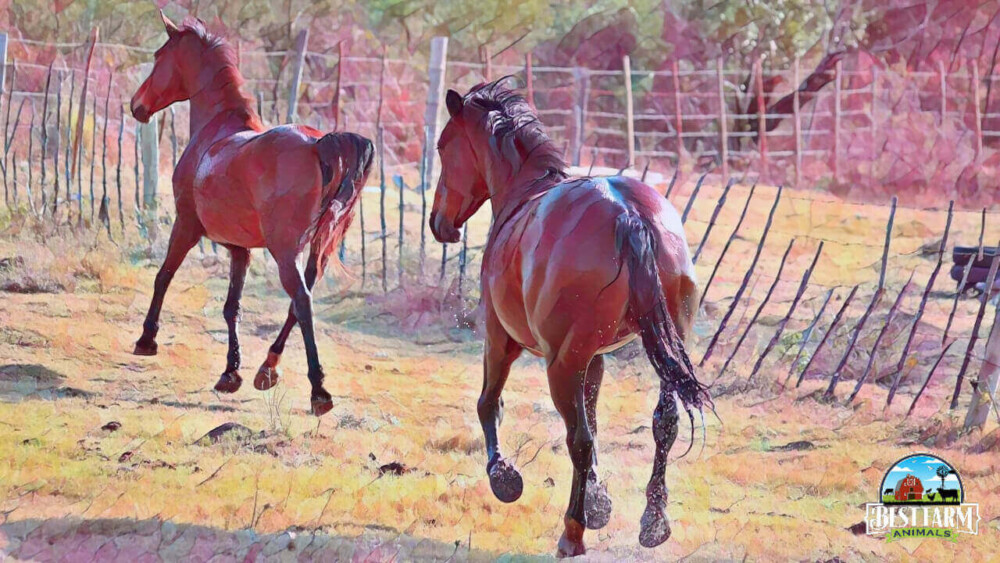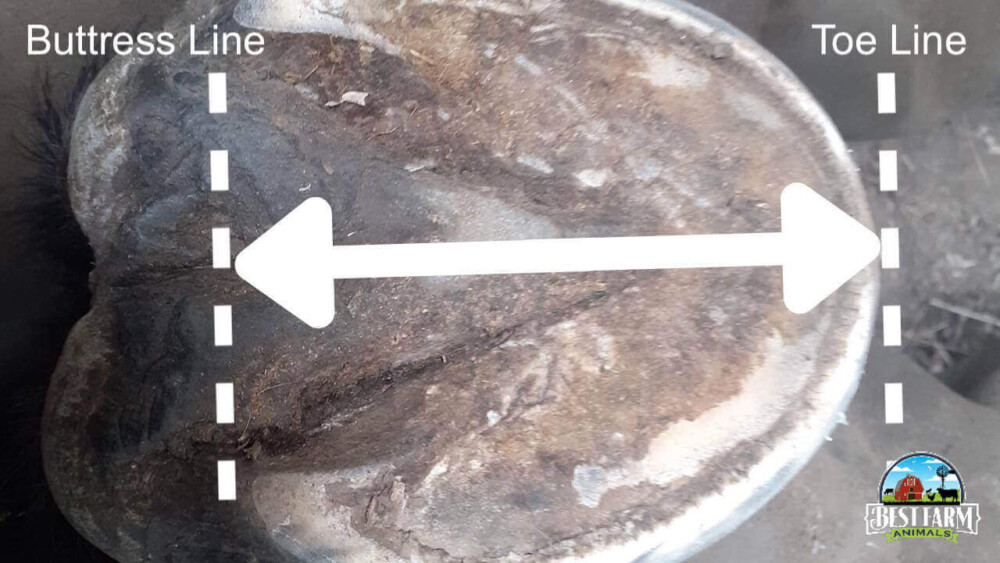Last year, Sweden’s showjumping team shone a spotlight on the controversial barefoot vs. shod debate.
Two of three horses in the Swedish squad competed barefoot, securing gold and silver medals for their riders. If horses can compete at top international events without shoes, what does that mean for the future of shoeing?
Do horses need shoes? We put shoes on horses to protect their feet and improve their durability. A horse with strong feet, a good diet, and sound conformation can live and work without shoes comfortably and soundly. Horses with poor conformation, an unbalanced diet, or poor-quality hooves may struggle without shoes.
My Anglo-Arab mare is nearly 19 years old and has never worn shoes. For over ten years, she worked with me, leading trails that saw us covering up to 40km a day.
She would sometimes complete over 500 km barefoot in a single month without any lameness or discomfort. The terrain was varied, including sand, grass, rocks, and gravel roads. Maintaining a barefoot horse isn’t for the faint-hearted. Regular trimming is essential, as is establishing a holistic approach to your horse’s health.
How to Transition Your Horse from Shod to Barefoot
To transition a horse from shod to barefoot, make sure the horse has plenty of time to adjust. Barefoot horses must be given adequate nutrition to support a healthy hoof wall and frog. The horse should be given time to adjust on various soils, starting with soft, grassy or sandy ground. Outside time is essential to increase hoof circulation. Quality hoof care and trimming provide great support in transitioning horses.
Can all horses go barefoot? Not all horses can successfully transition to barefoot, but most can go barefoot if the owners are willing to go through the transition process. Some horses do not have the hoof genetics or hoof health to transition due to previous injuries. Horses with extreme damage from shoes, competition, or other situations may not be able to successfully transition to barefoot without risk of further damaging their existing injury.
You can do many specific things to ease your horse’s transition to barefoot. Let’s dive in!
Transitioning to Barefoot Takes Time
You can’t just whip off your horse’s shoes and expect him to prance down a hard road. Just like a person used to wearing shoes, a newly barefoot horse will find soft ground relatively forgiving.
Walking on sand or grass is comfortable even for those used to wearing shoes. Now ask that person to walk on a gravel path or over rocks on the beach, and suddenly they can’t cope anymore. Their strides become shorter, and they try to minimize contact with the ground.
A newly barefoot horse feels precisely the same.
Converting a shod horse into a barefoot one is a process that requires patience, skill, and time. Depending on where you live, your horse may not be able to survive barefoot. Very wet conditions make soft hooves buckle and splay like damp cardboard. A horse that’s stabled most of the time also lacks the continual movement needed to maintain healthy circulation in the hoof.
Going barefoot in these conditions can be challenging, but options are still available. Hoof boots can help your horse transition to barefoot and give him the support he needs when he needs it.
I’ve seen numerous horses transition from shod to barefoot. For some, the process has been straightforward and painless. For others, it’s proved impossible. The following steps give you the best chance of success in your transition to barefoot, but it’s essential to recognize that barefoot isn’t suitable for every horse.
Nutrition comes First for the Barefoot Horse
Before pulling your horse’s shoes, speak to an equine nutritionist about diet. A barefoot horse needs certain nutrients, vitamins, and minerals to keep his hooves strong and supple. Biotin, lysine, zinc, copper, and vitamin E are all crucial for the barefoot, although all horses will benefit from having these in their diet.
Biotin helps to support hoof growth and facilitates the natural metabolism, enabling the horse to break down fats and sugars that can adversely affect the quality of the hoof.
Lysine is an essential amino acid, without which your horse’s hooves won’t grow correctly. For a barefoot horse, that means the hoof capsule wears faster than the horn that protects that capsule grows.
Horses not getting enough zinc will often develop thin walls and grow more slowly. Too little copper may lead to issues such as hoof abscesses and thrush.
Horses need vitamin E to build keratin, the “major structural protein” in both the horse’s hooves and coat.
A diet high in starch, fats, and sugars can weaken the horse’s hoof, leading to sole sensitivity and problems such as hoof abscesses, thrush, and laminitis.
However, equine nutritionist Carol Layton says, “Targeted hoof supplements rarely work alone.” Instead of adding things into your horse’s diet, she says, try to create a balanced diet that will give the horse the best nutritional support for improving hoof health.
Preparing your Horse for Going Barefoot
At the same time as adjusting your horse’s diet, start preparing him to go barefoot.
Farrier and veterinarian Dr. Scott Morrison recommends shoeing your horse “with a rolled toe for a couple of shoeings to increase sole depth” before transitioning to barefoot.
After you’ve pulled the shoes off your horse, give him time to adjust. Keep your horse on soft ground as much as possible, allowing him to seek out grass or dirt environments where he’ll feel more comfortable.
A simple trim can also help your horse transition to barefoot more comfortably. A light trim helps the sole increase in depth and allows the hoof wall to toughen. To reduce chipping, you can also roll or bevel the wall’s outer edge. Although some horses respond well to being barefoot and transition quickly, most will need a few weeks of rest while their hooves strengthen and adapt.
If possible, a newly barefoot horse should spend as much time outside as possible. Movement plays a critical role in boosting the circulation in the foot. When the barefoot horse puts pressure on the hoof, so the hoof expands like a shock absorber. When it raises that hoof, it compresses again.
Robert Bowker VMD Ph.D., Professor of Anatomy and Director of the Equine Foot Laboratory at Michigan State University College of Veterinary Medicine, has conducted numerous studies into barefoot horses.
The results of one showed that “the horse’s foot gets at least twice as much circulation when he’s barefoot on yielding terrain, as compared to when he’s wearing a metal shoe.” The more a newly barefoot horse can move around, the quicker his hooves will strengthen and adapt.
Regular Maintenance is Vital for a Barefoot Horse
A barefoot hoof needs just as much, if not more, maintenance than a shod one. I trim my horses’ hooves every four to six weeks, removing flares and excess horn to maintain the overall integrity of the hoof capsule. A barefoot hoof trimmed at irregular intervals will grow too long, changing the balance of the hoof and putting more pressure on the walls. This process can cause white line separation, flaring, chipping, and other hoof defects.
A newly barefoot horse needs a different style of hoof care than one that’s been barefoot all its life. Minimal trimming helps thicken the sole and allows the hoof wall to grow enough to suspend the coffin bone off the ground.
Although no one trim fits all hooves, a study into the effects of barefoot trimming on hoof morphology found that applying certain barefoot trimming principles is “potentially beneficial to the health of the foot.” These principles include lowering the heels, rolling or beveling the toe, rounding the peripheral wall, and leaving the sole, frog, and bars intact.
Finding a reliable and experienced barefoot trimmer or farrier is crucial to maintaining your barefoot horse’s health. Alternatively, you can read our article on how to trim your own horse’s hooves.
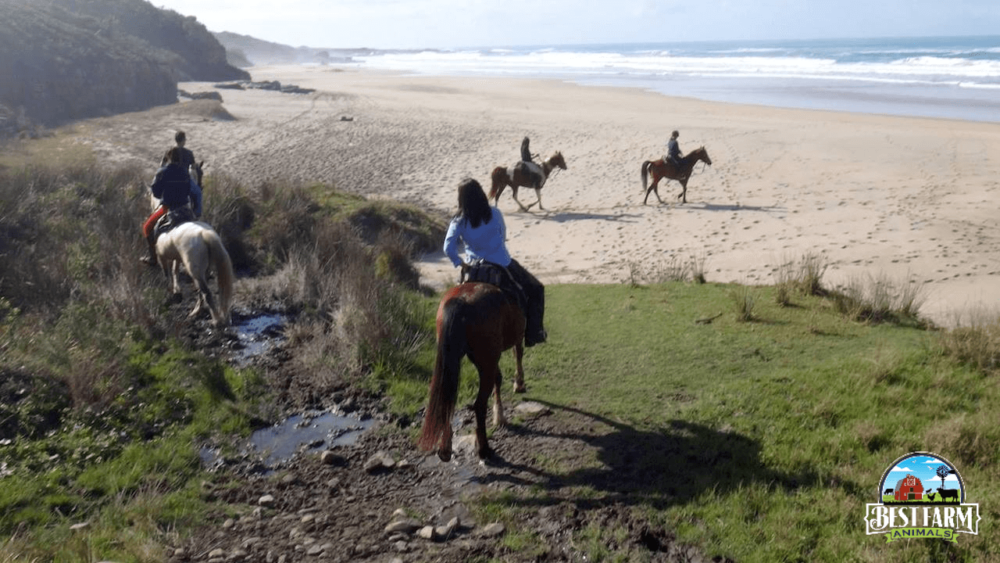
Environment can make Life Tough for a Barefoot Horse
A barefoot horse that lives in a soft pasture and spends some time stabled will be able to work effectively on similar surfaces. You should be able to ride him comfortably in a sand arena or on grassy trails, but it’s unlikely he’ll have the feet needed to cope with hard or rocky terrain.
My horses have both been barefoot all their lives. They live on rough grass pastures but ride out on rocky, gravel roads.
While both horses exhibit moments of discomfort on the road, especially if they tread on a sharp stone, their hooves have adapted enough over time to make the overall experience comfortable and harmless.
My horses have always worked barefoot on this terrain and have adapted to it accordingly.
Getting a formerly shod horse to a position where it can cope with such rugged terrain is a long process that requires months of dedication. Sole hardening treatments can expedite the process, but they’re not a panacea for all ills.
If you want to ride your horse without shoes over challenging terrain, you must start conditioning him early on. Give him a few weeks to adapt to barefoot life, but once he appears comfortable in the field, start taking him out and experimenting on different surfaces.
Lead him in hand for just 10 minutes at a time on any new surface. Any longer than this could cause discomfort and sensitivity.
If you start on asphalt or paving stones, give him some time to adjust. Once he’s walking comfortably on these surfaces, move on to something even more challenging.
Hoof Boots can Ease the Transition to Barefoot
If your barefoot horse struggles with his new hooves, hoof boots can help him adjust. Some horses may be slightly footsore in the field, while others only show that sensitivity when ridden. In either instance, hoof boots can provide your horse with support and protection while making the necessary adjustments.
All sorts of different boots are available, from turn-out boots to all-terrain trekking boots. When you’re first transitioning, versatile boots are the most cost-effective. Look for something like the Cavallo Trek All Terrain hoof boot that horses can wear for extended turn-out periods but also provides support and protection while riding over varied terrain.
Fitting hoof boots correctly is vital to their efficacy. Too loose, and they fall off. Too tight, and they’ll prevent the hoof from moving naturally.
To find the perfect fit, first, measure your horse’s hoof. To do this, you must take down both the length and width. Measure the width at the widest part of the hoof before moving onto the length.
Transitioning to Barefoot takes Time and Patience
It takes up to six months for a horse to fully transition to being barefoot, so it’s not a process you want to start just before a competition. You want your horse to be comfortable throughout the transition process, so giving him the time to adapt to each step of the process is vital.
I recommend giving your horse around three to four weeks’ rest after you first pull his shoes. Make sure he is completely comfortable before you start introducing any hoof conditioning exercises.
You should consider riding only once your horse is comfortable walking on various terrains. Even at this stage, you should take things slowly. Ride him on soft surfaces, to begin with, keeping the work light. As he becomes accustomed to carrying the extra weight on his new hooves, he’ll become more balanced. At this stage, you can introduce faster work or start trying him out on harder surfaces.
Not All Horses Will Be Comfortable Barefoot
In the wild, horses with poor conformation or weak hooves won’t survive, eliminating them from the gene pool. Domesticated horses often live with these genetic weaknesses for many years, making them poor candidates for life without shoes.
Climate also affects your horse’s hooves. Persistently wet conditions cause an unhealthy moisture level in the horse’s hoof. As the foot becomes wet, it struggles to bear weight and tends to collapse under pressure.
Wet hooves are also more prone to bruising, abscesses, and thrush.
Arid conditions can be similarly challenging for the barefoot horse. Without enough moisture in the hoof, the wall and horn become brittle, and prone to breaking and cracking.
While we can’t control the external environment, we can maintain the environment inside a horse’s enclosure or stall. Leaving a barefoot horse standing in urine-soaked bedding for several hours will weaken his hooves, so keeping his stall clean and dry is essential.
I’ve also heard of people adding stones or gravel to their horse’s enclosure, particularly in areas where the horses eat and drink.
Back in 400 BC or so, Xenophon, the famous Greek military leader and horseman, recommended adding “four or five wagon loads of pebbles” to the stable yard. He believed that doing so would harden both the hoof and the frog. This practice is still used today.
Although barefoot advocates like Robert Cook, FRCVS, Ph.D., argue that “All horses’ hooves are healthier without shoes, and barefoot horses are healthier than shod horses,” many farriers, equestrians, and horse owners disagree.
I’ve seen a Thoroughbred gelding persistently abscess after having his shoes removed. Even after six months of rest, he showed no sign of improvement. His feet would crack and flare constantly, never achieving the strong, thick walls of a happily barefoot horse. In the end, we had no option but to shoe him.
While many horses will flourish barefoot, it isn’t for everyone. Fortunately, there are more options for hoof protection now than ever before. You could always try hoof boots if barefoot isn’t working for you. If they don’t solve your problem, try glue-on shoes instead. It doesn’t have to be a choice between one extreme (iron shoes) and another (100% barefoot).

Frequently Asked Questions
Can you ride a barefoot horse on the road? You can ride a barefoot horse on the road if it’s had time to adjust to such terrain. Barefoot horses need to live and work on a variety of different surfaces to stimulate healthy growth and help them adjust to harder surfaces. Over time, the hoof wall thickens, offering more protection. Stabled horses will be more comfortable on the road if they get plenty of pasture time and have adjusted to rocky surfaces.
Can you compete on barefoot horses? Barefoot horses can compete in many national and international competitions. Many competitions that previously required horses to be shod are now becoming more aware of the health benefits of barefoot hooves and allowing horses to compete unshod. Many local and regional competitions are following suit.
Why don’t wild horses need hooves? Wild horses live outside 24/7 and roam across varied terrain. Their almost constant movement wears their hooves naturally, and they will instinctively seek out natural dietary supplements to strengthen their hooves. Wild horses with genetic or health issues that would be treated in a domestic environment don’t survive in the wild. This natural selection process tends to weed out horses with genetically weak hooves and breed horses with stronger hooves.
Do horses have feelings in their hooves? A horse’s hoof contains various different structures, some of which have nerves and feelings. The outer wall of the hoof is similar to our fingernails and has no feeling as it’s made of dead tissue. The frog of the hoof does have feeling and allows a horse to feel the surface it’s traversing. Trimming a hoof too short exposes the frog and can a horse’s sensitivity to rocky ground.
Is it better for a horse to be barefoot than shod? For a horse with good conformation and strong hooves, it’s better to be barefoot. Metal shoes constrict the hoof, which restricts its ability to absorb shock. This puts more strain on the joints which may limit performance and longevity.
How long does it take for a horse to adjust to being barefoot? It takes around six months for a horse that was shod to feel comfortable barefoot.
What happens to a horse with no shoes? When you first remove a horse’s shoes he’ll show some level of sensitivity, potentially to the point of lameness. With regular trims and the correct diet, however, he’ll adjust to life without shoes quite comfortably.
Not all horses have the conformation or hoof quality to live barefoot.
Can you ride a horse with no shoes? You can ride a horse without shoes provided it’s been given enough time to adjust to being barefoot. A freshly barefoot horse needs time for his hooves to adjust and should be rested until he’s comfortable. This process can take anywhere between a few weeks to a few months, depending on the horse and the terrain you wish to ride him on.
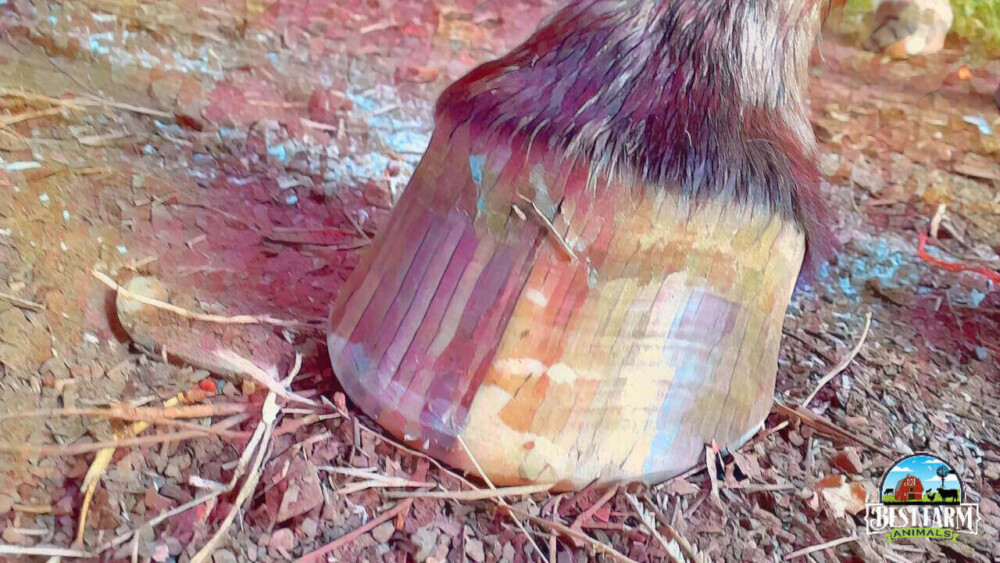
Conclusion
Not all horses need shoes; many will be healthier and happier without them. Transitioning from shod to barefoot is a long journey that requires a holistic approach. A barefoot horse needs a balanced diet, plenty of exercise, and regular trimming.
Horses can take up to six months to adjust to life without shoes, and some may never get there. Barefoot isn’t suitable for horses with poor conformation or weak hooves.
If your horse is comfortable barefoot, you should be able to ride it on any terrain and compete successfully.
My Favorite Equine Resources For Horses and Donkeys
This list contains affiliate products. Affiliate products do not cost more but helps to support BestFarmAnimals and our goal to provide farm animal owners with accurate and helpful information.
Squeaky Chicken Toy is hilarious to watch and the horses love it! It’s not super tough so keep it away from dogs.
Dewormer with Ivermectin: I use this for my horses and my goats. Duvet makes a great dewormer. I switch between the Ivermectin one and one like this one so the worms don’t get immune to it.
Manna Pro Apple Flavored Nuggets are a delicious smelling treat that my horses go crazy over.
Equinity Amino Acid Supplement for Horses makes a big difference for any horse that’s struggling with arthritis, hoof issues, or just generally. It’s great for older horses who can’t absorb all the nutrients in their food as well!
Manna Pro Weight Accelerator helps older horses gain weight and stay healthier! This was especially helpful when one of my older horses lost weight over the winter and helped her regain her weight over the summer!
Farnam Fly Control goes on the horse or donkey and will keep the flies off your sweet pet. It makes horses way more comfortable and will keep sores from getting infected as well.
Wound Kote protects sores and wounds. It acts as an antiseptic and helps wounds heal faster. It works on both my horses and goats.

